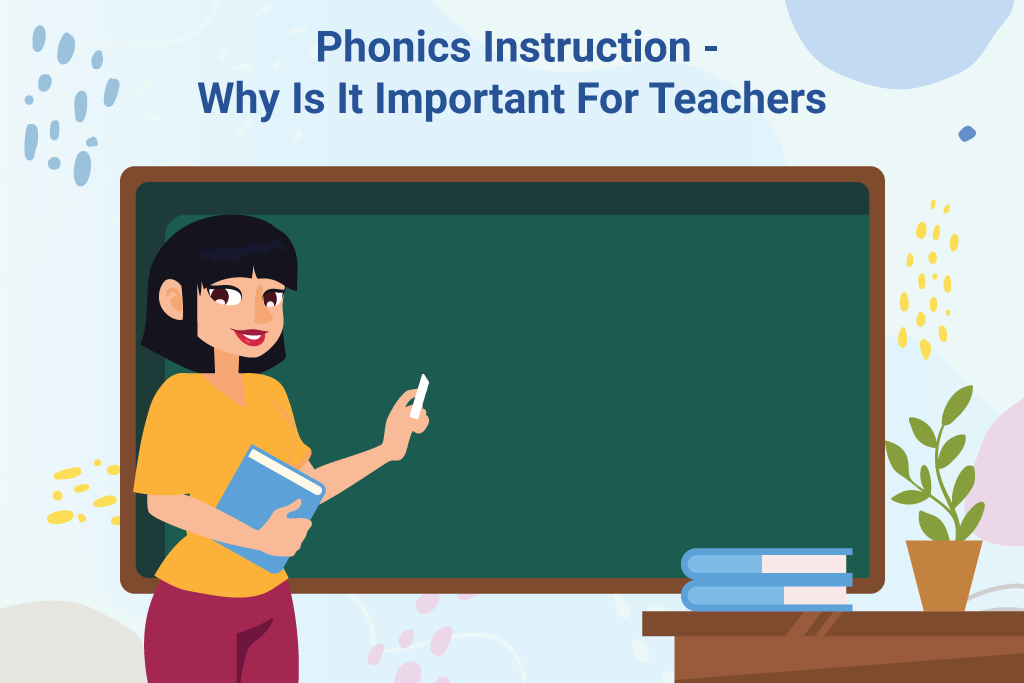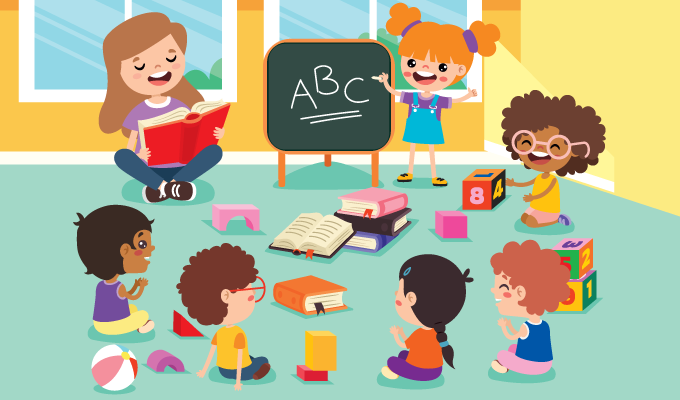Phonics Instruction – Why Is It Important For Teachers?
Phonics is a method of teaching reading and spelling that helps students learn the relationship between sounds and symbols. It allows students to decode words by recognizing the sounds represented by letters and letter combinations. In recent years, phonics has become an effective way of building strong foundational reading skills.
Phonics instruction improves reading accuracy and comprehension among students. It provides a structured approach that is easily adaptable to the learning style of every student. That is why phonics teaching is becoming important for all teachers. In this blog, we will explore the main reasons why phonics is essential.
Level up your teaching with phonics. Dive in and empower your students!
Phonics And Its Types
A child can become a proficient reader and writer only when he understands the relationship between sounds and written symbols. Phonics instructions focus on helping students know the relationship between sounds and their written symbols.
Once students understand this relationship, it becomes easier for them to decode different words. As they progress, they can also clearly decode different letters or letter combinations. Students who undergo phonics training gain better fluency in reading and writing. It proves beneficial in their long-term academic life.
Phonics teaching methods are usually of three types. Below is an explanation of these methods.
- Synthetic phonics: This phonics teaching method teaches letter-sound relationships systematically. This instruction starts with teaching students individual phonemes and blending them to form words.
- Analytical phonics: Analytical phonics involves analysing whole words to identify phonetic elements.
- Embedded phonics: Embedded phonics focuses on integrating phonics instruction within meaningful reading activities.
Why Is Phonics Instruction Important?
The English language can be complex to understand. Children have to learn to read and spell several different letters and sounds. Phonics is an efficient way to help develop this skill among the students. It helps students become better readers and writers.
Let us look at the few reasons why phonics is an essential part of learning for students.
1. Improves Reading Skills
When children practise developing phonics skills, they can easily differentiate between different words and sounds. So, when they come across any word, they can decode it easily. For example, when students read ‘cat,’ they can easily note that the letter ‘c’ makes the sound ‘ka.’
Likewise, the letters ‘a’ and ‘t’ make the sounds ‘ae’ and ‘t’ respectively. Students understand how to form letter-sound relationships. Eventually, they develop better reading skills.
2. Enhances Spelling Abilities
A child who has a good knowledge of the letter sound relationship can grasp different spellings. The phonetic method of teaching reading focuses on making students apply the knowledge to spell different words.
Instead of memorising different words, students can simply associate different sounds with the letters they read. So, they become better and independent readers. A student who undergoes phonics instructions doesn’t need help to tackle different words during reading and writing.
3. Boosts Vocabulary Development
Adding to the vocabulary of little kids is a tough job. However, it becomes simple by enrolling a student in a phonics course. Apart from improving the reading and writing skills of the students, phonics also helps in expanding a child’s vocabulary.
As children can easily understand how to sound out different words, they can also figure out the meaning of unfamiliar words that they come across in the text.
Importance Of Phonics Instructions For Teachers
For a teacher, phonics instruction plays a very important role in the early childhood education of a student. The below-mentioned are a few points that explain its importance for teachers.
1. Enhances Teaching Practice
Teachers who make phonics a part of their lesson plans can impact more effective reading and writing skills among students. Also, such teachers usually have better teaching practices than teachers who do not prioritise phonics. Phonics can help teachers make the students grasp the fundamental connection between letters and sounds.
There are different types of phonics. Also, the phonics teaching methods vary from teacher to teacher. Every teacher can easily come up with a different and structured approach to teaching students with unique learning needs.
2. Supports A Better Learning Environment
Phonics instruction can help in creating a better learning environment for students. The learning environment is usually supportive. With a phonics instructor’s help, students can easily feel empowered to decode different words. They can also comprehend written language easily.
When the teachers use their phonetics teaching strategies, they can easily instil a sense of confidence among the students to tackle new words. Students have more motivation to enjoy their reading and writing tasks.
3. Helps Promote Literacy Across Different Subjects
It is easy for teachers to use phonics in teaching different subjects to students. Teachers can easily integrate phonics activities into maths, science, and social studies lessons. So. students can develop good literary skills while also getting a deeper understanding of other subjects.
4. Promotes Professional Development Of Teachers
Teaching phonics to students is an ongoing process. It requires the professional development of the teachers. Phonics instructors need to engage in several workshops and training lessons to refine their phonics teaching methods. These workshops also help them deepen their understanding of the phonics.
5. Helps Teach Blending And Segmenting To Students
Blending and segmenting are essential skills that allow students to encode and decode words. Teachers provide explanations and engage students in activities that help them learn everything about blending and segmenting. This way, students can become proficient readers. They can also understand the context of the words in a much better way.
Challenges In Teaching Phonics
Teachers encounter several challenges while teaching phonics-based reading to students. For instance, there is a lack of training and workshops to make the skills of the teachers better. Also, the resources for teaching phonics are altogether very limited.
Some tutors might find it difficult to support struggling readers who do not grasp the concepts of phonics easily. Teachers require more training and patience to impart the necessary reading and writing skills to the students.
Level up your teaching with phonics. Dive in and empower your students!
Conclusion
Phonics is the key to helping students become better readers and writers. With proper phonics instructions, they can become proficient in the English language and be confident in their skills. Phonics teaching is also important for teachers as it is a part of their ongoing professional development.
However, while teaching phonics, teachers can face several challenges. For instance, there is a lack of resources that teachers can use to equip themselves to impart better skills to the students. In such a case, there is always an option to undergo phonics training for teachers. Teachers who want to make their phonics teaching more effective can enrol in a Jolly Phonics online course for teachers.

Hema Dave
Stemming from the aspiration to nurture and inspire young minds, Hema started her professional journey into education 20+ years ago. She founded 'Phonic Smart' as a trained educationist, an institute committed to equipping children with phonics skills and helping parents and teachers implement them effectively. Her diverse skill sets, encompassing teaching, teacher training, and coaching allow her to contribute valuable insights to the education industry.


